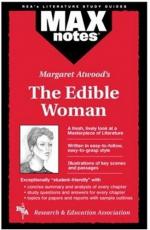|
This section contains 4,678 words (approx. 16 pages at 300 words per page) |

|
SOURCE: “Alternate Stories: The Short Fiction of Audrey Thomas and Margaret Atwood,” in Canadian Literature, Vol. 109, Summer, 1986, pp. 5–14.
In the following essay, Davey considers ways in which Atwood's characters cope with reality by viewing it through fictional frameworks.
She knew now that almost certainly, whenever she saw a street musician, either he was blind or lame or leprous or there was a terribly deformed creature, just out of sight, on behalf of whom he was playing his music.1
Short stories have often focused on a character's discovery of a second perspective on experience, as in Mansfield's “The Garden Party” or Joyce's “The Dead,” or in Alice Munro's collection Lives of Girls and Women in which Del Jordan discovers Garnet French's narrow view of family life, or her mother's vision of herself as “Princess Ida.” Often the discovery of such alternate perspectives has marked moments of traumatic insight or...
|
This section contains 4,678 words (approx. 16 pages at 300 words per page) |

|


